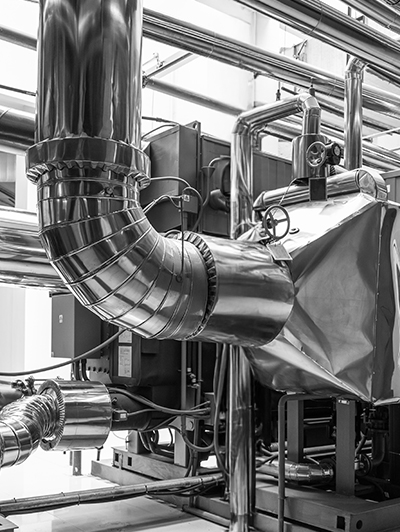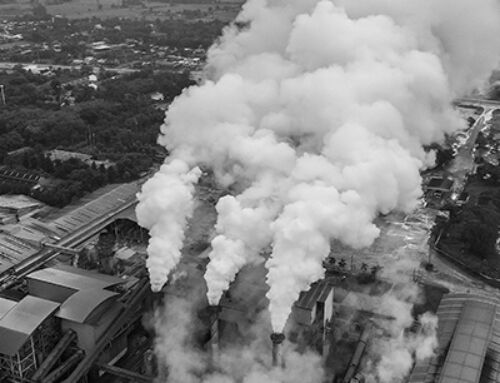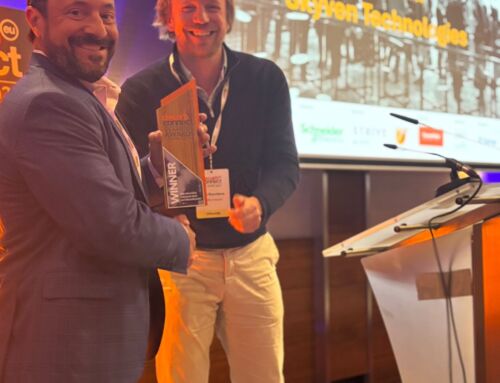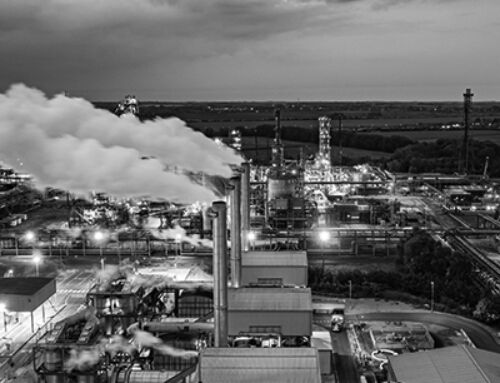While manufacturers have used traditional boilers for decades to manage processes like drying and pasteurization, their inefficiencies are well-documented. They waste a substantial portion of the heat they generate as exhaust or water, and they’re prone to mechanical failures.
Industrial steam-generating heat pumps capture heat from existing sources and transform it into steam, resulting in energy savings while reducing carbon emissions. There are many different types of heat pumps, so it’s important to consider which one is right for your facility and operations.
How Industrial Heat Pumps Improve Energy Efficiency
One of the primary advantages of heat pumps is their exceptional energy efficiency. Unlike conventional heating systems, which typically have efficiencies of 70-90%, heat pumps can achieve efficiencies of more than 300-400% (known as the Coefficient of Performance, or COP). This means that for every unit of electricity consumed, a heat pump can generate three to four units of heat. That’s because they use electricity to upgrade low-temperature heat. With this low temperature heat input, they can produce the same amount of steam as natural gas or electric boilers while using significantly less energy, making them a highly efficient steam production technology compared to fossil fuel-powered systems.
Such efficiency levels drastically reduce overall energy consumption, making industrial heat pumps a cornerstone of any strategy aimed at driving down operating costs while also reducing emissions.
Types of Heat Pumps and Their Roles in Industry
Heat pumps can use a variety of different heat sources , each suited for different environments and levels of efficiency. The four main types—air, geothermal , water, and waste heat —offer unique benefits for certain use cases:
Air Source Heat Pumps
Air source heat pumps (ASHPs) are the most common type of heat pump in both residential and commercial settings, and can be good for smaller-scale industrial operations with low baseload steam needs. By drawing heat from ambient outside air, ASHPs can efficiently warm buildings even in lower temperatures. However, they have low efficiencies when generating steam or hot water at the temperatures and pressures required for industry.
Geothermal Source Heat Pumps
By capturing heat stored in the earth, geothermal source heat pumps (GSHPs) maintain high efficiency even in colder temperatures because ground temperatures remain relatively constant year-round. However, GSHPs typically require large upfront investment and required space, and ground temperatures are usually too low to efficiently generate steam or hot water for industry use.
Water Source Heat Pumps
Water source heat pumps (WSHPs) extract heat from nearby bodies of water, such as lakes, rivers, or even man-made reservoirs. Similar to ASHPs or GSHPs, extracting heat from water at ambient temperatures means that WSHPs have low efficiencies when generating steam or hot water for industrial use.
Waste Heat Source Heat Pumps: Generating Steam
In the industrial sphere, recovering and reusing heat from industrial facilities can significantly increase energy efficiency. Industrial facilities are powered by thermal processes like drying, separations, refrigeration, and process cooling, which release large amounts of waste heat into the atmosphere. Much of this heat can be captured and upgraded to produce industrial steam.
Waste heat sources are typically the best choice for industrial facilities that require high temperature/pressure steam thanks to their high temperatures and availability.
The Case for Mechanical Vapor Recompression (MVR) Steam-Generating Heat Pumps (SGHPs)
Heat pumps that use waste heat sources are a great choice to generate high temperature/pressure steam for manufacturing facilities. Heat pumps can use waste heat in a variety of different ways, but mechanical vapor recompression (MVR) steam-generating heat pumps are a top-tier solution for generating boiler-quality steam at industry-required temperatures and pressures, using waste heat. By capturing low-temperature industrial waste heat and upgrading it to high-temperature steam using electricity, MVR SGHPs drastically improve the efficiency of process heating. This makes them highly efficient with the bonus of being an environmentally-friendly option compared to conventional steam generation methods.
Key Advantages of MVR SGHPs:
Unmatched Efficiency MVR SGHPs stand out for their superior energy efficiency, with coefficients of performance ranging from 2.1 to over 8. Their high efficiency is due to their ability to leverage low-grade waste heat from facility operations and then increase its temperature using electricity. This approach is much more efficient than fossil-fuel powered or electric boilers, which have a coefficient of performance of just 0.83 and 0.99, respectively. As a result, these boilers require significantly more energy to produce the same amount of process steam. Additionally, MVR SGHPs operate with a more efficient thermodynamic cycle compared to other heat pumps, making them a prime candidate for large-scale steam generation.
Proven at Scale MVR SGHPs have been successfully deployed in multiple full-scale industrial settings. Several systems are operational in Europe and Asia, including a prominent installation at a biorefinery in Hungary. These units were custom-built to meet the demands of industrial applications using the same MVR technology that has been reliably used in processes like dairy evaporators for decades.
Water as a Refrigerant
Unlike other heat pump technologies that use synthetic refrigerants with high global warming potential or other environmental and safety risks, MVR SGHPs use water as both the working fluid and refrigerant. Water is non-toxic, non-flammable, has zero GWP, and poses no regulatory risks. This eliminates the concerns associated with hydrofluorocarbons (HFCs) and hydrofluoroolefins (HFOs), which are linked to environmental regulations and potential health impacts, including the presence of PFAS, a “forever chemical.”
With such clear advantages—high efficiency, serious emissions reductions, proven reliability, and safe operation—MVR SGHPs are poised to become the industry standard for decarbonizing steam generation.
So why hasn’t MVR SGHP adoption become widespread?
The answer lies in a combination of factors, including upfront capital costs, integration challenges, and the inertia of existing steam systems. However, as industrial facilities increasingly prioritize energy and operational efficiency, the case for MVR SGHPs will only grow stronger.
Skyven Arcturus: A Hybrid Solution For Renewable Heat
While many industrial heat pumps require manufacturers to fully replace existing boiler systems, requiring extensive design and engineering, the Skyven Arcturus steam-generating heat pump is a hybrid solution that integrates in parallel with existing steam systems, offering both redundancy and cost efficiency.
Because it’s not tied to a specific manufacturing process, it can be located up to half a mile away from your facility.
Key Advantages of Skyven Arcturus
Adaptable for Complex Industrial Processes
The versatility of the Arcturus system is one of its strongest attributes. It is capable of integrating seamlessly into complex industrial environments, and is deployed in a hybrid configuration to operate alongside existing boilers. This enables increased redundancy and reliability, as well as an innovative fuel-switching strategy to reduce operating costs. This adaptability enables manufacturers to optimize their thermal processes without major disruptions, making it an attractive option for retrofitting and improving the efficiency of existing systems.
High Efficiency With Low Operating Costs
Arcturus is engineered to maximize energy efficiency by upgrading waste heat to higher temperatures, which minimizes the need for additional power. The system’s advanced thermodynamic cycle results in substantial cost savings on energy bills. Arcturus further reduces operating costs through fuel-switching utilizing a hybrid configuration. For industrial facilities looking to reduce their dependence on expensive fossil fuels, Arcturus is an ideal solution.
While savings depend on your facility, they typically range from $300,000 per year to over $1,000,000 per year.
Reduction in Carbon Footprint
By leveraging renewable electricity and waste heat to power its steam generation process, Arcturus significantly reduces greenhouse gas emissions compared to traditional heating methods. Whether the goal is to meet corporate sustainability targets or comply with evolving environmental regulations, Arcturus helps organizations cut carbon emissions while maintaining the performance and reliability they need.
Scalability Across Industries
From the food and beverage industry to chemical and ethanol manufacturing to pulp and paper mills, Arcturus can be tailored to meet the unique requirements of various industries. Its modular design allows for scalable deployments, ensuring manufacturers of all sizes and sectors can benefit from this state-of-the-art technology.
If you’re interested in learning more about how the Arcturus steam-generating heat pump can help you reduce emissions and lower operating costs, download our comprehensive whitepaper on this cutting-edge technology.





